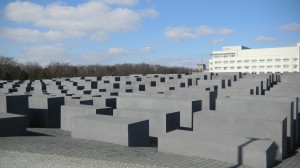Something was missing. Those stately Romanesque and Gothic arches in the cathedrals I spent 4 months exploring in 2010 were supposed to encompass everything God created, but they left out some of the people who helped build their society.
Cities that built some of the greatest cathedrals, including Speyer, Mainz, Worms, Rouen, Troyes, Cologne, Bonn and Strasbourg, had thriving Jewish communities with some of Europe’s most vibrant intellectual life. But you have to dig to find them.
Jews lived up in Cologne at least since the 4th century. Others were living in Italy and Southern France. Urban institutions that held the Roman Empire together disintegrated in the 6th century. Urban life grew again in Charlemeign’s time (reigned 768-814), but declined during barbarian invasions in the late 9th century. But towns began to grow continuously from the late 10th century to the early 14th, and they built the great Romanesque and Gothic cathedrals.
Jewish families moved into Europe’s main towns in their early stages of growth, and helped build Europe’s economy. The Frankish empire, which spread from the Pyrenees on the modern Spanish border to the Elbe River, relied on Jewish merchants and seamen to manage caravans to the East. Muslims were largely excluded from East-West trade after they were defeated at the Battle of Poitiers in 732.
Christians were forbidden to lend money with interest, so Jews found a niche in banking. They helped finance some of the growth of Europe’s towns.
But Jews did more than contribute to Europe’s economic growth. We’ll explore some of their intellectual life in the next post, and find more variety in Europe than the Gothic cathedrals portray.


Comments on this entry are closed.